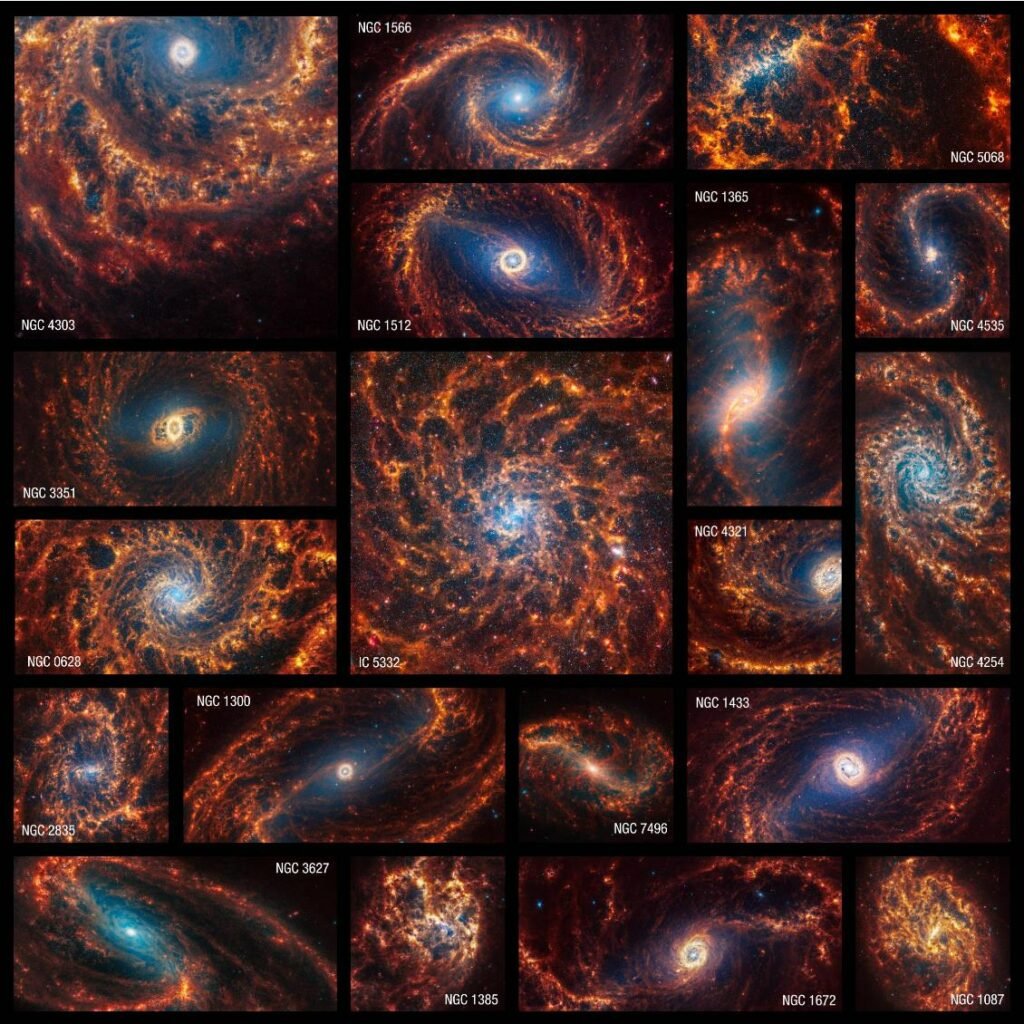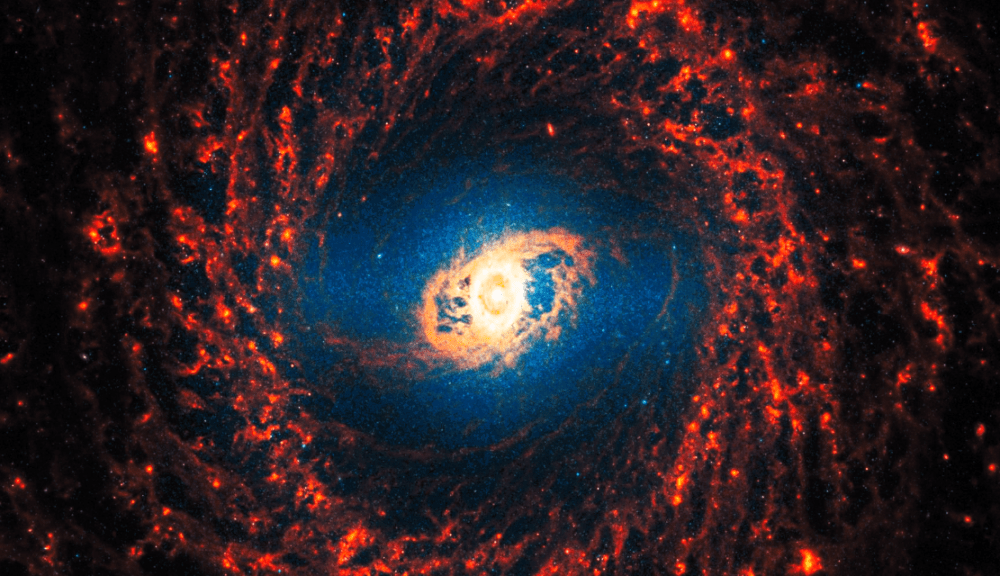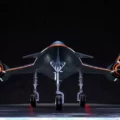NASA’s James Webb Space Telescope (JWST) has captured a stunning new series of near- and mid-infrared images that depict 19 nearby spiral galaxies in vivid detail.
The achievement, part of the Physics at High Angular resolution in Nearby GalaxieS (PHANGS) project, provides a level of clarity and detail in the new imagery that offers astronomers unprecedented insights into the structure and dynamics of this group of celestial bodies.
“Webb’s new images are extraordinary,” said project scientist Janice Lee with the Space Telescope Science Institute in Baltimore, in a press release. “They’re mind-blowing even for researchers who have studied these same galaxies for decades. Bubbles and filaments are resolved down to the smallest scales ever observed, and tell a story about the star formation cycle.”
At the heart of the new research is the JWST’s advanced infrared capabilities, which allow it to pierce through the dusty areas that typically obscure astronomers from viewing these regions at optical wavelengths.
Altogether, this enables a clearer understanding of the complex processes occurring within these galaxies, such as star formation and the behavior of supermassive black holes at their centers.


Incorporating the detailed observations made by JWST’s Near-Infrared Camera (NIRCam) and Mid-Infrared Instrument (MIRI), the images reveal a remarkable array of features in spiral galaxies. NIRCam has detected millions of stars, visible in blue tones, dispersed across the galaxies’ spiral arms and clustered in dense star groups. MIRI, on the other hand, highlights the glowing dust that surrounds and intersperses between stars, revealing regions of active star formation.
The telescope’s images also display large, spherical shells in the gas and dust, suggesting the impact of stellar explosions. These structures are crucial for understanding the dynamics of star formation and the distribution of interstellar material. The red and orange hues tracing the spiral arms represent extended gas regions, indicative of waves that inform scientists about the distribution and movement of gas and dust within these galaxies. This level of detail in the images is unprecedented and offers new insights into the processes of galaxy formation and evolution.
The significance of these images lies in their contribution to our understanding of galaxy evolution. By studying these spiral galaxies in detail, astronomers can better understand how stars are formed and how they influence the growth and structure of galaxies. The data from JWST is expected to provide a wealth of information about the physical conditions of star formation, the distribution of dust and gas, and the dynamics of these spiral galaxies.
Moreover, the images offer a new perspective on the role of supermassive black holes in galaxy centers. Understanding how these black holes interact with their surrounding environment is crucial for unraveling the mysteries of galaxy formation and evolution.
Since its launch, the JWST has played a big role in capturing the public’s imaginations about space and astronomy. Prior to these recent images of spiral galaxies, the JWST captured some of the deepest and sharpest images of distant galaxies, revealing structures from the early universe that were previously unseen. Moreover, its ability to analyze the atmospheres of exoplanets, offering data on their composition and conditions, is crucial for understanding the potential for life on other planets.
Access to the images is open to the public and can be accessed online at the Physics at High Angular resolution in Nearby GalaxieS (PHANGS) page.
MJ Banias is a journalist who covers security and technology. He is the host of The Debrief Weekly Report. You can email MJ at mj@thedebrief.org or follow him on Twitter @mjbanias.

